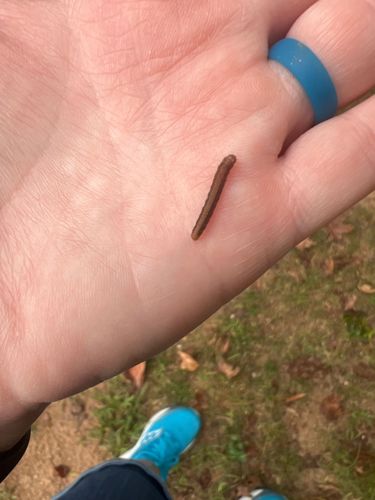Earthworm
Scientific Name: Lumbricus terrestris (one common species, many others exist)
Order & Family: Clitellata (subclass), Lumbricidae (family)
Size: Typically 10-30 cm (4-12 inches) in length, but can vary greatly by species.

Natural Habitat
Moist soil rich in organic matter, beneath leaf litter, in gardens, forests, and grasslands.
Diet & Feeding
Decomposing organic matter, including dead leaves, plant debris, and microorganisms in the soil. They ingest soil as they burrow, extracting nutrients.
Behavior Patterns
Nocturnal, coming to the surface at night to feed and mate. They burrow extensively, creating tunnels that aerate and mix the soil. They are hermaphroditic but require another earthworm for reproduction.
Risks & Benefits
Generally beneficial to ecosystems. They improve soil structure, aeration, drainage, and nutrient cycling, which benefits plant growth. They are also a food source for many animals. No known risks to humans.
Identified on: 10/5/2025